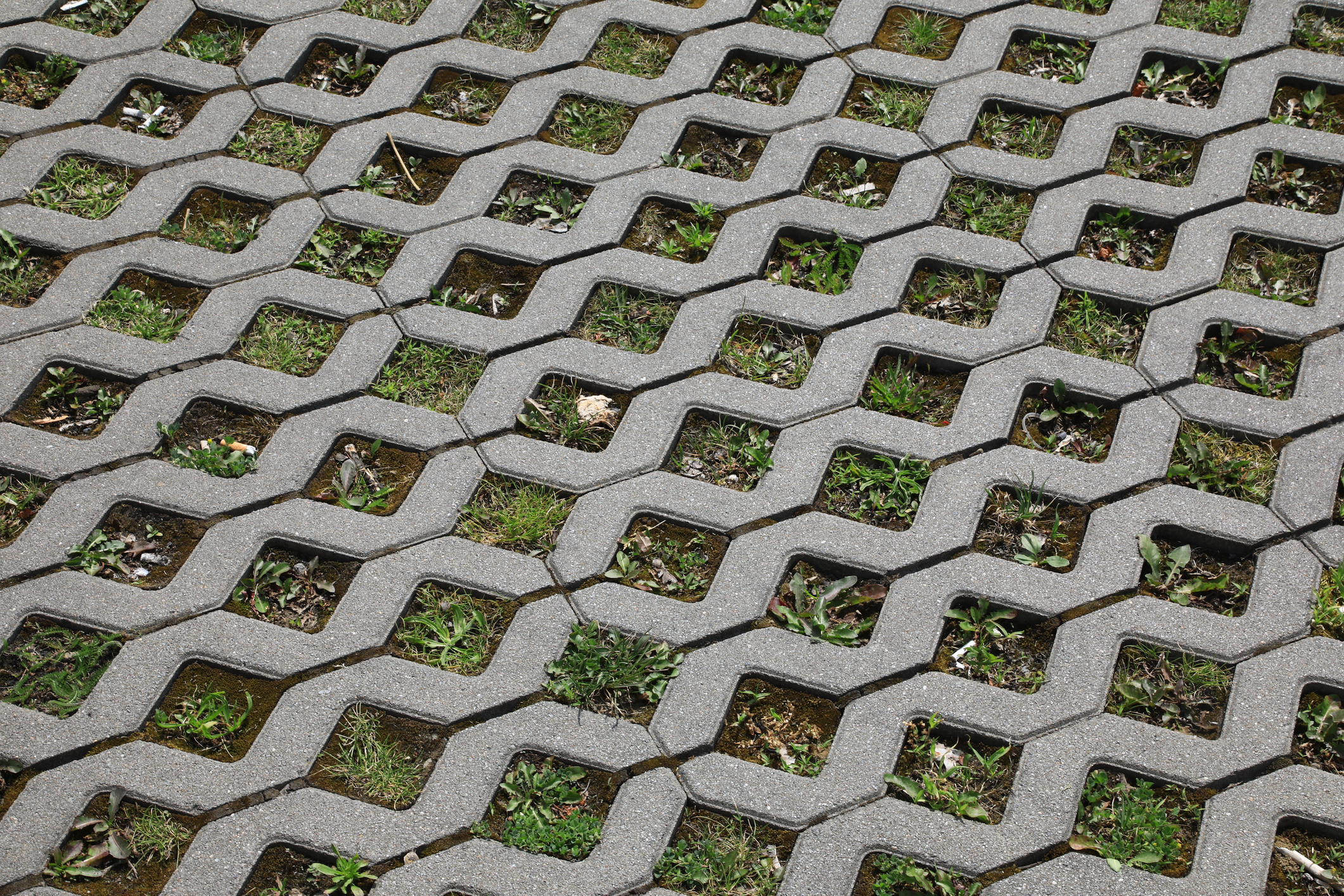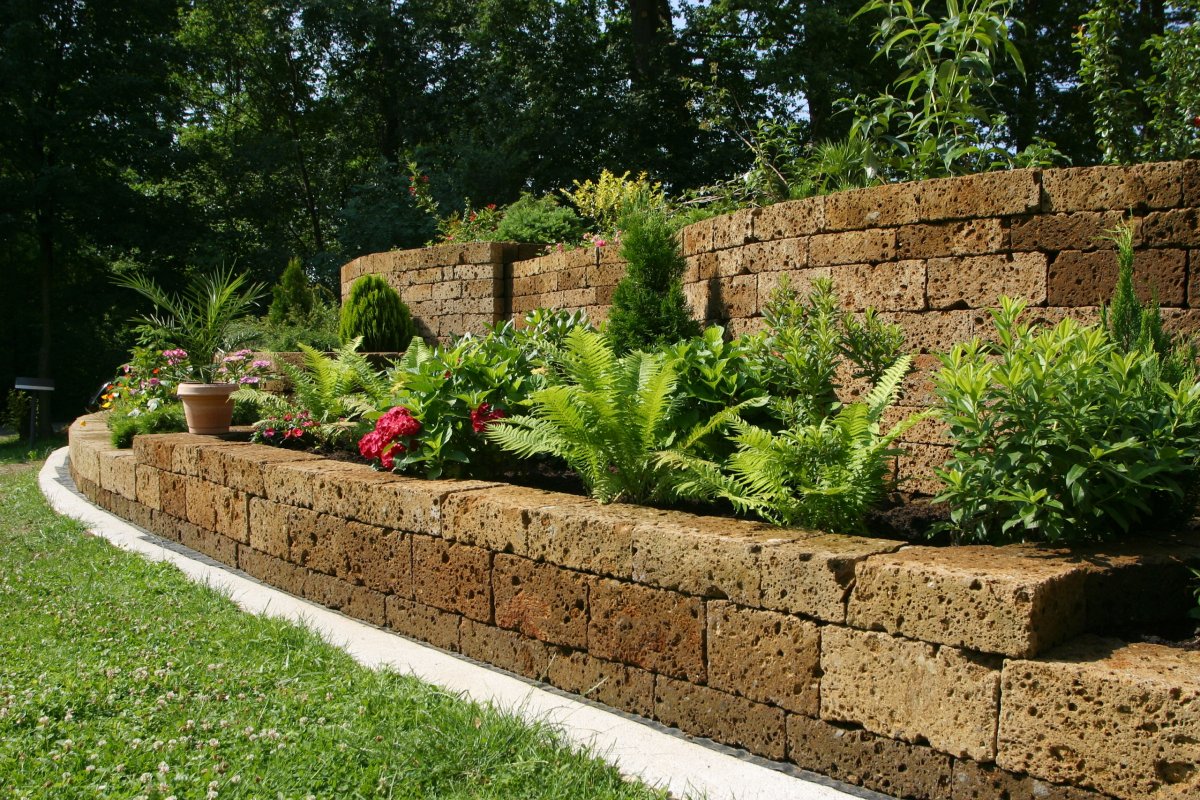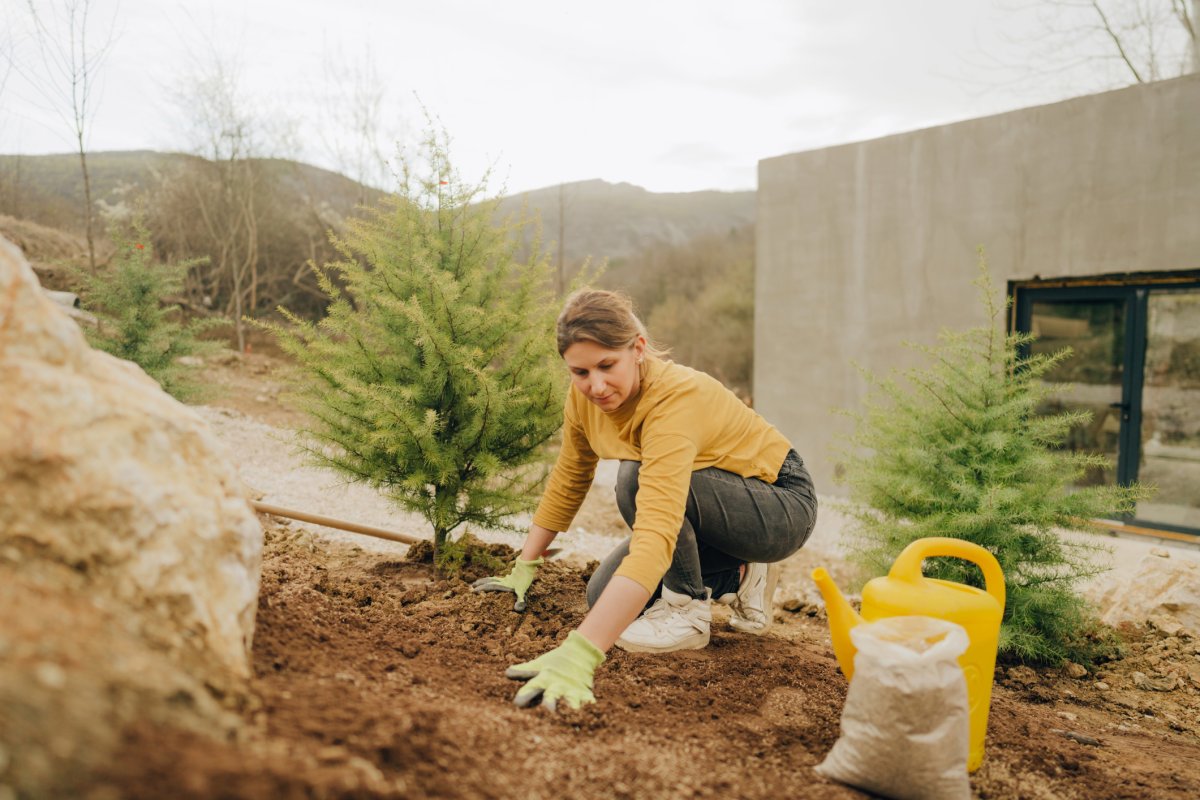We may earn revenue from the products available on this page and participate in affiliate programs. Learn More ›
Nearly half of American homes are at severe or extreme risk of facing at least one type of climate-related natural disaster, according to the 2024 Realtor.com Housing and Climate Risk Report. This includes damage from floods, hurricane winds, wildfires, extreme heat, or hazardous air quality. Not only could this be devastating to your family and property, but it comes with a hefty price tag to repair and rebuild after a storm or other climate-related event.
Fortunately, there are several preventive measures you can take to safeguard your property so it is climate resilient. Consider pursuing the following hardscaping and landscaping projects to help with natural disaster protection.
1. Install permeable pavers.
As you add more hardscape materials like concrete patios to your yard, you can increase water runoff and erosion from the nonpermeable materials. Choosing permeable materials—which are porous so water can flow through them easily—for projects like pathways, patios, and decks can lessen runoff.
According to the Environmental Protection Agency, such materials include pervious asphalt, interlocking pavers, pervious concrete, gravel, mulch, and plastic grid pavers, which allow rain and snowmelt to drain more easily into the soil during a storm. The ground absorbs the water, which decreases the burden on storm drains. This helps minimize water pooling and prevent flooding and water damage, especially during and after heavy rainfall.

2. Design a landscaping windbreak.
The selection and placement of natural materials in your yard can help protect your property from strong winds. Referred to as landscaping windbreaks, these efforts can provide effective protection when the wind speed increases. A windbreak can reduce wind speed for a distance of as much as 30 times the windbreak’s height. Interestingly, windbreaks also lower heating costs by reducing the wind chill, or cooling effects of wind, on your house.
To create an effective windbreak, you’ll need to identify the best trees, bushes, and shrubs for your local climate. The best foliage for a windbreak has low crowns that can slow wind speeds close to the ground. A mix of evergreens and deciduous trees is an effective option, and might include Eastern red cedar (Juniperus virginiana), Arizona cypress (Hesperocyparis arizonica), Ponderosa pine (Pinus ponderosa), Sycamore (Platanus occidentalis), and Chinese elm (Ulmus parvifolia).
Plant the greenery together in a clump to block wind from the ground up to the height of the trees. The best place to plant a windbreak is one or two tree heights away from your house on the side where winds are worst. The larger the tree, the farther you should plant it from the house. Never plant trees near power lines. Dense trees and shrubs, combined with a wall, fence, or earth berm, can stave off or lift the wind all the way over the house.
3. Build a retaining wall.
Consider building a durable retaining wall to protect your home from flooding. Retaining walls are typically constructed out of reinforced concrete blocks, gabion, stacked stones, brick, rammed earth, or steel. The wall creates raised sections of the yard that serve as a strong barrier. By redirecting rainwater away from your property, a retaining wall helps keep flood water at bay to prevent basement leaks and other types of water damage to your home.
Retaining walls also can prevent soil erosion. They stabilize slopes and help keep soil in place; eroded soil is a significant contributor to flooding, especially during heavy rain. By stopping erosion, the wall minimizes the amount of sediment that could block drainage systems or make flood conditions worse.
Retaining walls are a good investment overall. In addition to helping with long-term water management in your yard, their design can add an attractive hardscaping feature that enhances curb appeal. Given the complexity of building a retaining wall, it’s advisable to hire a pro to handle the job.

4. Create defensible space through firescaping.
Another way that vegetation in your yard can play a role in protecting your home is through firescaping. This approach involves designing fire-resilient landscaping around the perimeter of your home to reduce risks from wildfires in what’s referred to as a defensible space.
Defensible space consists of multiple layers, or zones, that make it easier for firefighters to put out a blaze.
- Zone 0: This zone consists of the nearest 5 feet that surround your home; it should be free of dead or dying plants and any combustible items like wood piles or flammable outdoor furniture. Choose hardscaping materials such as pea gravel or decorative rocks, as opposed to combustible mulch or bark for shrub beds.
- Zone 1: This is the area within 30 feet of your house that allows firefighters to tackle the fire. In addition to close hardscaping, plant low-growing and less-dense foundation shrubs, such as azaleas and boxwoods, and keep trees away from your house.
- Zone 2: This area extends 100 feet from your home and should include trees and shrubs that are thinned out, along with wide paths that create firebreaks.
5. Add a rain garden.
Another way to minimize flooding is to build a rain garden in your yard, which is a garden strategically designed to collect and filter stormwater runoff from roofs, driveways, and other impervious surfaces. A rain garden design includes layers of soil, mulch, and native plants with deep root systems that help slow the flow of water. This way, the water seeps into the ground rather than pooling in the yard, overwhelming storm drains, or soaking areas by the house that can damage the foundation. Trees, grasses, ground covers, and shrubs are all part of an effective—and attractive—rain garden.


